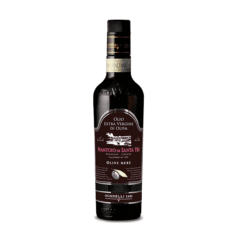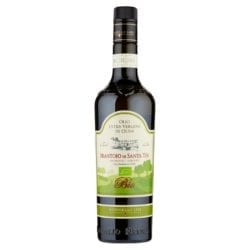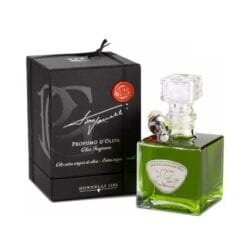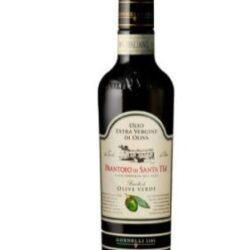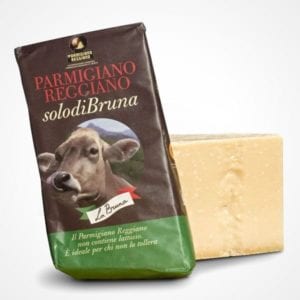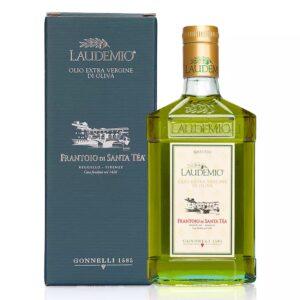So what’s the difference between PDO and PGI Tuscan olive oil?
The distinction lies in the production process. The acronym PDO stands for Protected Designation of Origin, while IGP stands for Protected Geographical Indication.
In the case of DOP products, all the qualities and characteristics of the product are ascribed to the geographical environment of reference, which means everything concerning the elaboration and marketing of the product originates in the declared territory. Meanwhile IGP implies that the Consortium for the protection of Tuscan PGI Extra Virgin Olive Oil guarantees the authenticity of the oil compulsorily produced in Tuscany. Its color is more or less intense green when just obtained and that over time tends to turn towards yellow. On the nose the aromas recall green vegetal notes with round final sensations and a more or less evident bitter note is always present on the taste accompanied by a spicy sensation. An oil with character but balanced and an ideal companion in the kitchen.

Photo from Olio Toscano IGP
Tuscan Olive Oil History
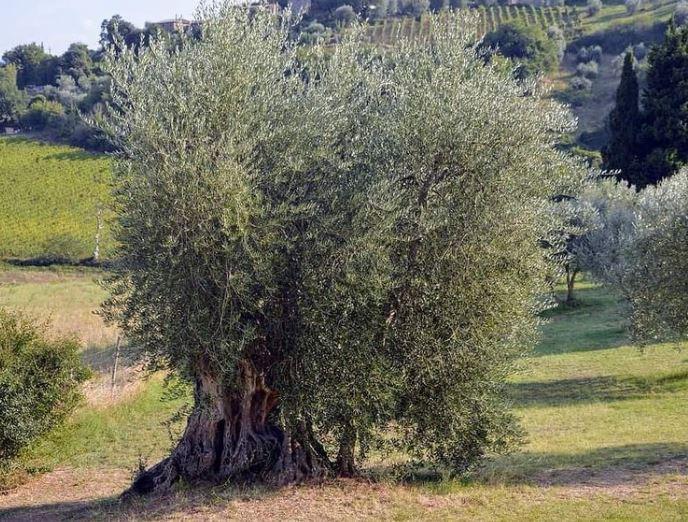 High quality olives have grown in Tuscany for centuries, the starting point of a renowned Tuscan olive oil that crosses time and borders. In fact, olive growing is a fundamental element of the Tuscan agri-food tradition, an essential protagonist of the food and wine, landscape and cultural heritage of this splendid region.
High quality olives have grown in Tuscany for centuries, the starting point of a renowned Tuscan olive oil that crosses time and borders. In fact, olive growing is a fundamental element of the Tuscan agri-food tradition, an essential protagonist of the food and wine, landscape and cultural heritage of this splendid region.
As reported in the 2016 Flos Olei guide, there are many historical pieces of evidence that report the presence of wild quality olive trees in the coastal areas already in prehistoric times. Its fortune, however, began towards the end of the Middle Ages, a period in which crops were widespread throughout Tuscany, except for the plains of the valley floor and clayey territories.
Tuscan olive oil experienced a further incentive thanks to the political work of the Medici, who reclaimed woods and swamps to obtain arable areas. Although this expansion towards the North involved the loss of 70% of the olive-growing heritage during the great frost of 1985, today in Tuscany the sector is fully active, thanks to rational and quality management of the territory, divided between large and small producers.
The dominant variety is the precious frantoio, which is flanked by the cultivars of moraiolo, leccino, pendolino and correggiolo, as well as the more typically Tuscan cultivars, including the arancino, ginestrino and melaiolo cultivars. Since 1997, Tuscan olive oil has been protected by the Tuscan IGP brand, which involves the whole region with eight sub-areas: there are also four certified PDOs, in the Chianti Classico, Terre di Siena, Lucca and Seggiano areas.
How To Recognize a real Tuscany Oil
Each package of Tuscan Extra Virgin IGP oil is easily recognizable by the mark on the neck of the bottle and the alphanumeric code that allows you to reconstruct the entire supply chain, thus offering maximum transparency and safety. Those looking for authentic Tuscan extra virgin olive oil cannot go wrong. This is the safest method to be sure of buying a product that is unique in origin and typicality, rich in the aromas and flavors that distinguish true Tuscan oil. The harvest of olives belonging to the varieties provided for by the Production Regulations takes place exclusively in the olive groves registered with the Tuscan IGP Denomination and compulsorily within the administrative territory of the Tuscany Region. The pressing of the olives, as well as the harvesting, is mandatory within the Tuscany Region. The oil that has passed the traceability checks, the chemical and organoleptic controls as established by the Production Regulations, can use the name and therefore be packaged as Toscano IGP. The packaging phase is also mandatory within the Tuscany Region.
Taste Tuscan Olive Oil: Buy Now!
-

Italian Extra Virgin Olive Oil – Frantoio di Santa Tea
€26.90 - Sale!

Italian Bio Extra Virgin Oil – Frantoio di Santa Tea
Original price was: €26.90.€22.90Current price is: €22.90. -

“Oil fragrance” – Tuscan olive oil – 200ml
€26.00 - Sale!

Italian Extra Virgin Green Olive Oil
Original price was: €26.90.€23.90Current price is: €23.90.

